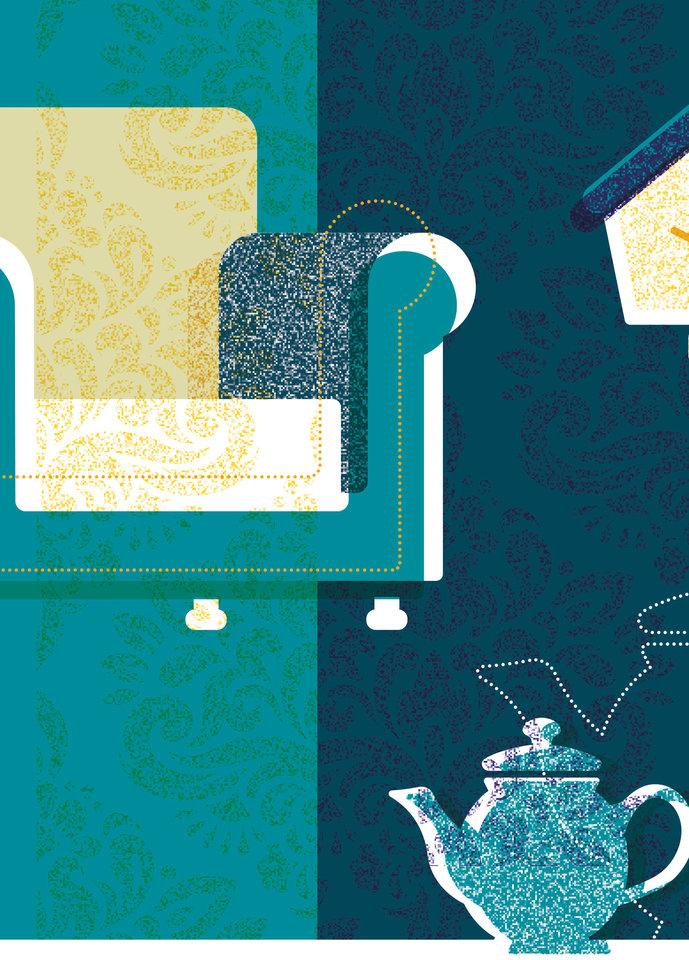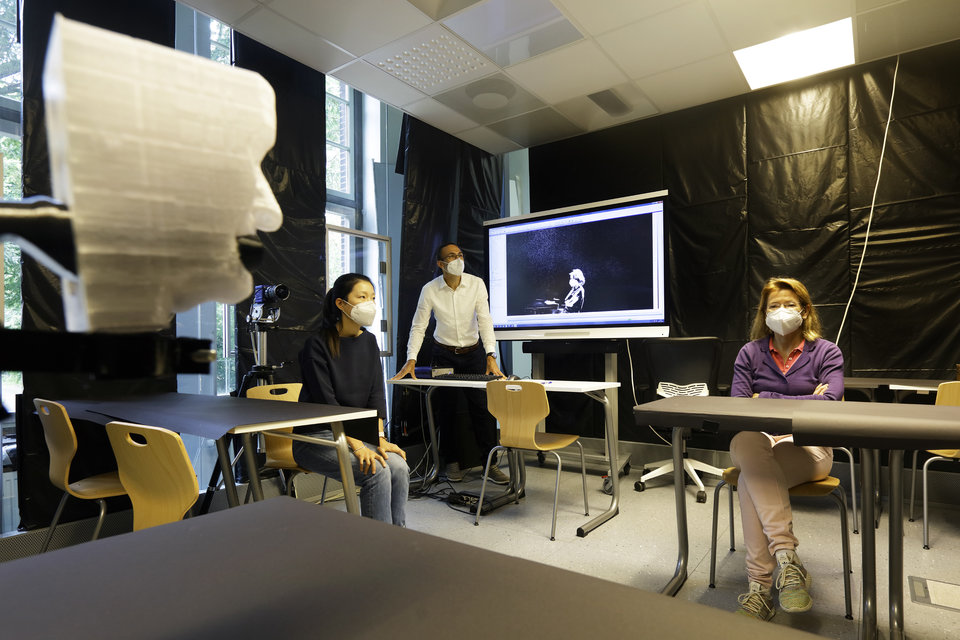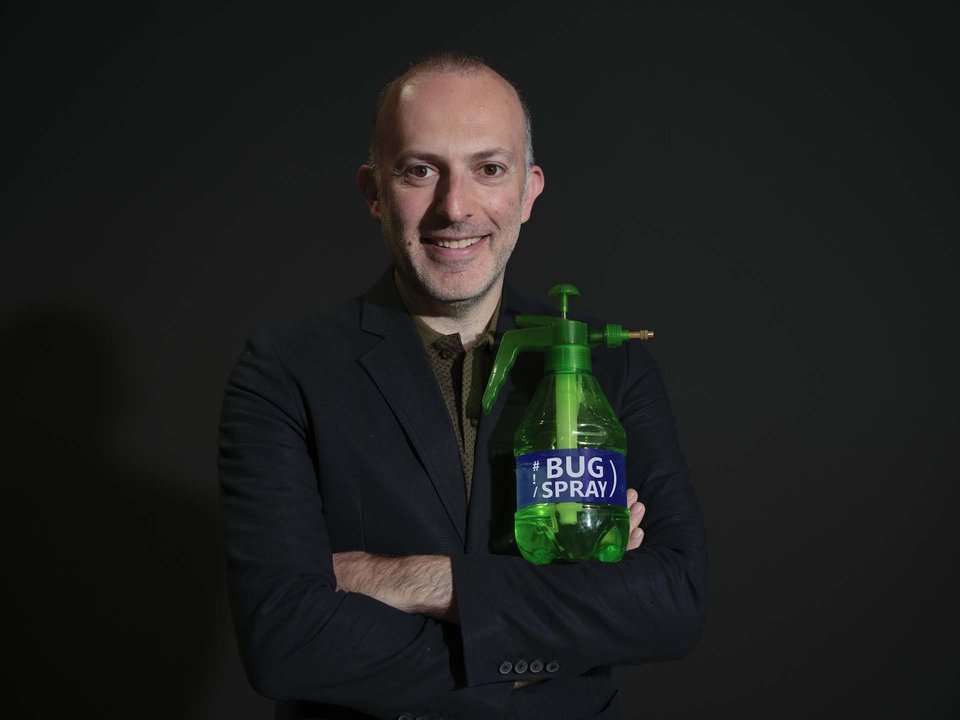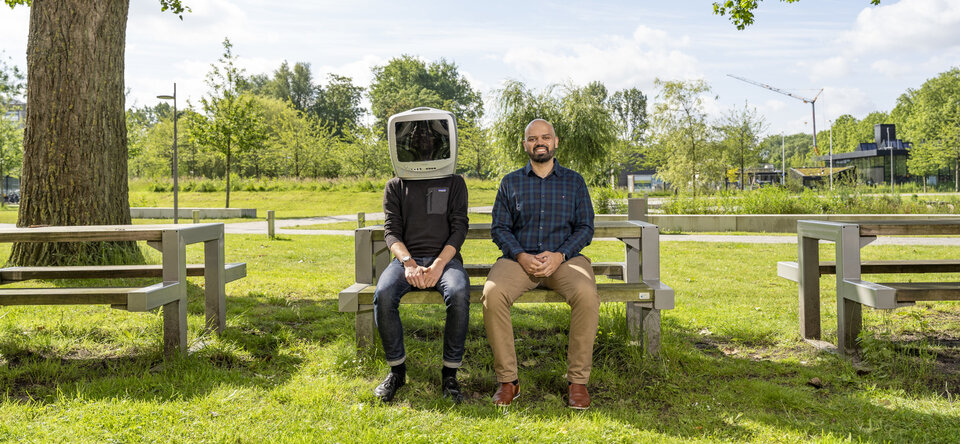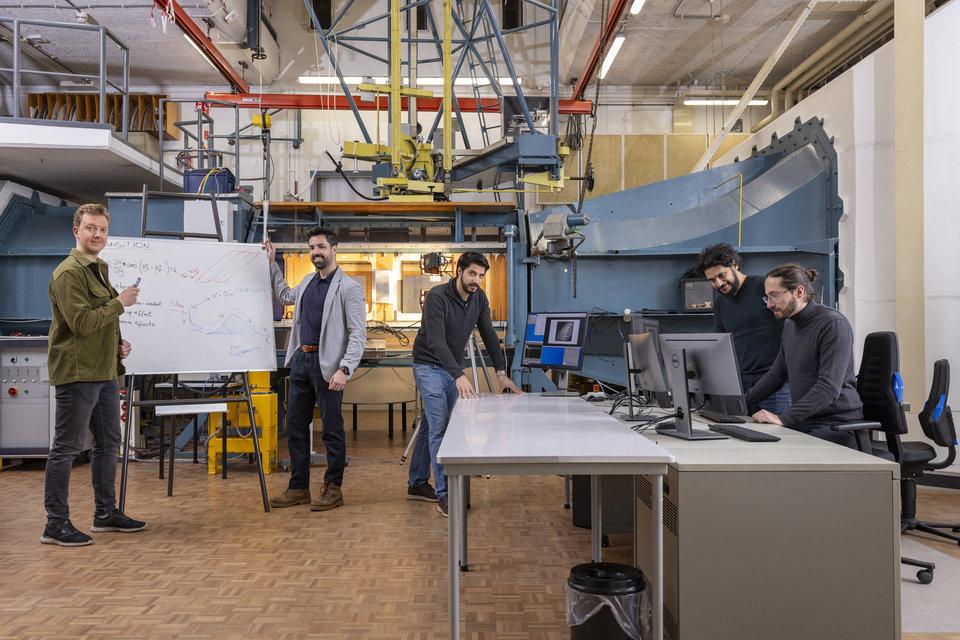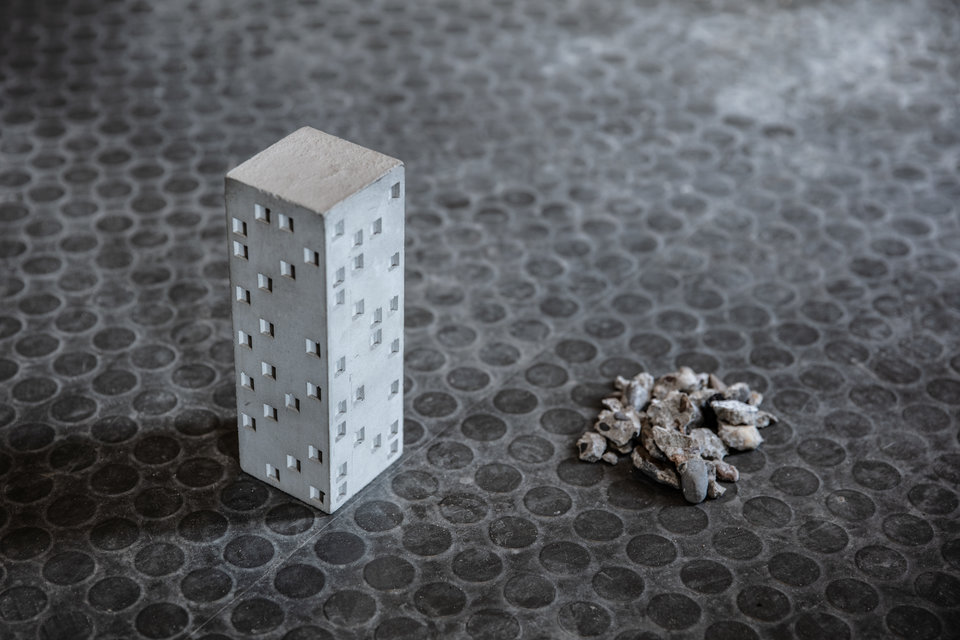Renovation works on the Oude Kerk in Delft, an important piece of architectural heritage, revealed an unwelcome surprise. Salt crystals were found on the lower section of the tomb of Admiral Tromp. Such crystals can, under certain conditions, cause serious damage. One possible procedure is to immerse the entire affected section in water. But this monument is too massive and too valuable to risk mistakes. What to do? Consulted associate professor Barbara Lubelli: “If you truly want to protect your heritage, you need to research before you intervene.”
Dr. Barbara Lubelli can reasonably be described as a ‘damage detective’ Originally from Milan, her particular set of skills has seen her collaborate with companies and researchers all over Europe. At the moment her base of operations is at TU Delft, from where she is often consulted for cases all over the Netherlands. In the meantime she heads the Heritage & Technology laboratory where she studies the effects of internal salt crystals, a slow-acting poison… for masonry.

Most masonry buildings contain salt, either dissolved in internal moisture or as tiny crystals. Even if your construction materials were originally salt-free, nature finds a way. Through the soil, the wind, or an occasional flood, salt will enter structures. The problems start when changes in conditions, such as humidity or temperature, cause these salts to crystalize. On a surface this process creates ‘efflorescence’, visible salt crystals. But internal crystallisation can cause damage. Plaster and wall tiles get detached, mortar starts to crumble, and in time, entire walls degrade.
Fighting back against decay
Venice is particularly afflicted by salt decay. A common procedure when renovating facades is to apply render (i.e. outdoor plaster) with mixed-in water repellent. This render prevents moisture spots or efflorescence by trapping dissolved salts in its inner layer. However, Lubelli points out that this trapping effect creates a buildup of salt which eventually crystalises and damages the masonry. “In less aggressive conditions we could apply salt-transporting render, which would work as a ‘sacrificial material’ by absorbing salt from the walls. But because of the conditions in Venice, you would have to replace this render every few years.”
By conducting research before intervention, you save time, money, and monuments.
A solution for this dilemma might come from a research project led by Lubelli called MORISAL, which aims to develop a MORtar with Inhibitors for SALt crystallisation. The plasters developed in this project are currently being tested in the Brouwershaven church in Zeeland, which was flooded with seawater during the 1953 North Sea disaster. “During the first attempts at damage control, the church walls were covered in tar. The dissolved salt could not escape to the surface and therefore spread higher up in the church walls.” If the mortar successfully hinders salt decay, it could potentially be applied on other valuable heritage buildings.
How to crack the case in seven steps
- Inspect the scene and surroundings. Use a magnifying glass to look at details.
- Carefully observe the damage itself. What type, why at this location?
- Formulate a hypothesis about the cause of damage.
- Systematically gather samples: at different depths, of both damaged and undamaged areas. These might be powders, scales, or even solid cores.
- Measure the samples’ moisture content, both actual and hygroscopic (i.e. adsorption at high humidity). The results indicate where and how much moisture and salt are present.
- Use specific techniques, such as ion chromatography or X-ray diffraction, on select samples to identify the salt type.
- Determine a plan of action based on your results to aid the restoration, prevent further damage, and futureproof the structure.
In the case of the Tromp monument, the salt present turned out to be gypsum, which is poorly soluble. This makes gypsum both less harmful than other salts and difficult to remove by immersion in water. In fact, the research team identified the real culprit to be hygric (i.e. water-driven) dilation of stone layers, meaning adding more water would have been actively harmful. She recommended keeping the monument at a constant humidity and preventing condensation.
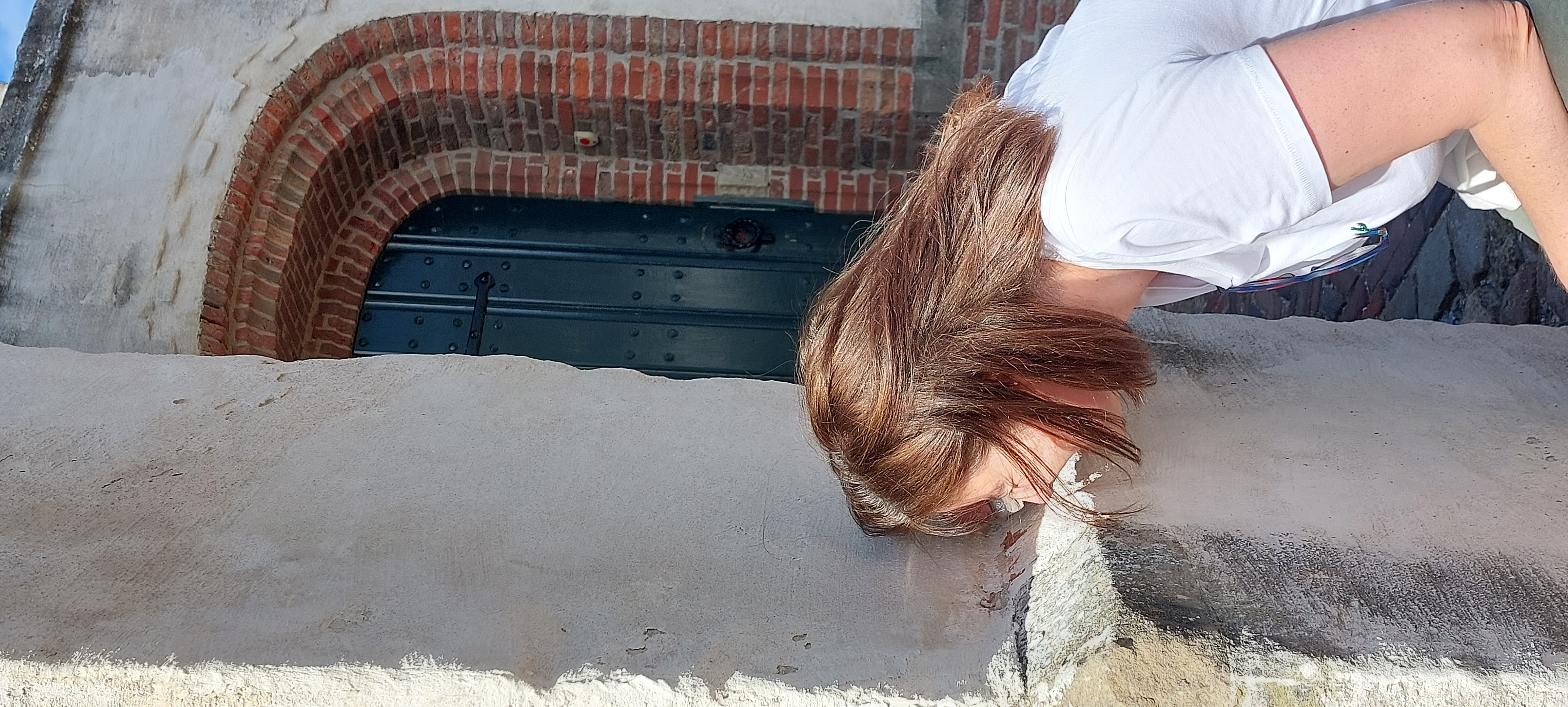
Forensic science for masonry
Salt is not always to blame. During renovation of the masonry of iconic building Het Schip in Amsterdam, the alarm was sounded due to suspected salt damage of one of its balconies. Lubelli’s research uncovered the real culprit, an accidental rainwater basin underneath the balcony floor. Water would rise into and saturate the brick railing. During winter, it would repeatedly freeze and thaw, causing frost damage. The renovators simply had to drain the reservoir and repair the cracks, instead of dismantling the entire balcony. Lubelli: “By conducting your research before intervening, you save money, time, and monuments.”

When Lubelli arrived in Delft, the first order of business was creating a Heritage & Technology laboratory. The lab is now filled with man-sized machines which expose all kinds of new and old building materials to rapid cycles of hot and cold, humid and dry. “I can reproduce 10 years of weathering in 3 months” Lubelli mentions. Part of her research focusses on the durability of concrete from the mid-20th century. It’s a topic of growing concern since much of the western world’s infrastructure and recent heritage is concrete-based.
The future according to the damage detective
Technological advances are changing Lubelli’s work. “New measuring instruments, for example those using lasers, will allow me to more easily monitor decay.” At the same time, new building materials are being developed at a rapid pace. Two examples are 3D-printed concrete and geopolymer cement. Lubelli: “These materials are often marketed as more sustainable alternatives. But how will they cope with salt damage? I believe they are only sustainable if they are durable!”
New materials are only sustainable if they are durable… a building cannot be considered low impact if we have to do major renovation work within a decade.
Dr. Barbara Lubelli has two main recommendations for the architects of the future. Firstly, consider the detailing: “how will the structure interact with its surroundings? How much groundwater can enter the walls, where will rain collect and flow? By considering these factors, you can prevent the occurrence of decay.” Secondly, consider long-term material behaviour. “Architects used to focus mainly on the aesthetics of their building materials. Nowadays another important factor is the environmental impact. But a building cannot be considered low impact if we have to do major renovation work within a decade.”
More information
Dr. Barbara Lubelli is associate professor at the department of Architectural Engineering and Technology within the Faculty of Architecture and the Built Environment. For the past six years she was the chair of the Technical Committee RILEM 271-ASC, which developed a standardized accelerated test to reliably and quickly assess the resistance of brick and natural stone to salt decay.
Follow these links for more information about moisture damage to buildings, concrete heritage, the Heritage and Technology lab, and project MORISAL.

